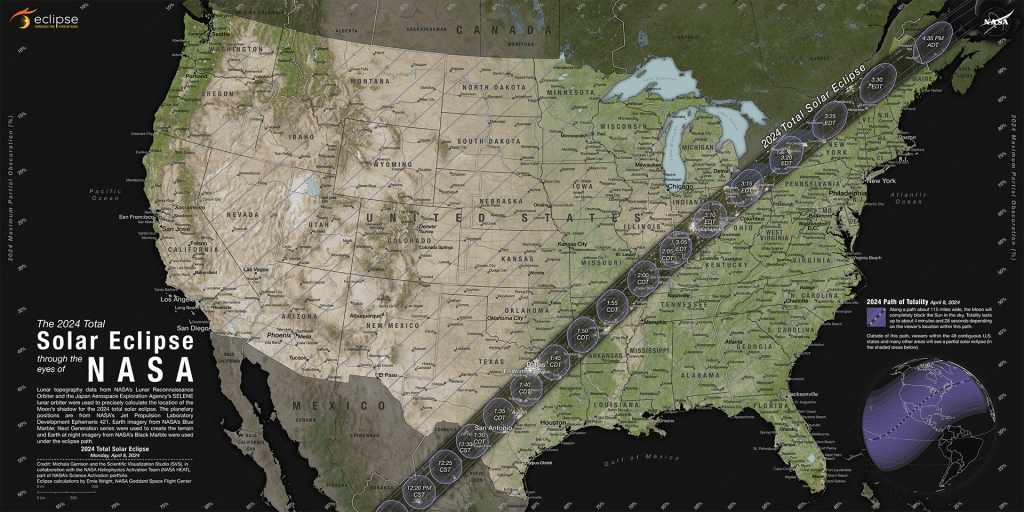A total solar eclipse will move across America on Monday, and while Southern California won’t see the sun entirely blocked out, the eclipse will be partially visible across the region.
According to NASA, locations in the U.S. that will see a total or near-total eclipse include several cities in Texas, Arkansas and Ohio. Up to 14 states fall on the “narrow” line of totality, which stretches from Mazatlán, Mexico to Newfoundland, Canada.
“Weather permitting, the first location in continental North America that will experience totality is Mexico’s Pacific coast around 11:07 a.m. PDT,” NASA said on their 2024 eclipse information webpage.
Officials are using the celestial event as a moment to teach people about eclipses and what makes them special.

“Eclipses have a special power…they move people to feel a kind of reverence for the beauty of our universe,” NASA Administrator Bill Nelson said. “Their power is not only to unify us on earth, but to further science and discovery.”
Observers predict that the moon will partially block the sun in Southern California for approximately four minutes and 28 seconds; the moon’s shadow first starts covering part of the sun on the West Coast around 10:15 a.m. and will continue to do so for about two hours.
The maximum partial eclipse in SoCal will be from 11:10 a.m. until 11:15 a.m., when the sun will be obscured by 59% to 64%, depending on your location.
In Los Angeles, the Griffith Observatory will be hosting a livestream of the phenomenon broadcast from a team of scientists in Texas beginning at 10 a.m. Local viewing parties are being held at Cal State L.A., the California Science Center, Caltech, the Manhattan Beach Library and the Griffith Observatory lawn.
For umbraphiles looking to see the eclipse from another level, Delta Air Lines is offering several “eclipse flights” which specifically operate to spend as much time as possible in the path of totality.
To view NASA’s eclipse viewing safety tips, click here.





















